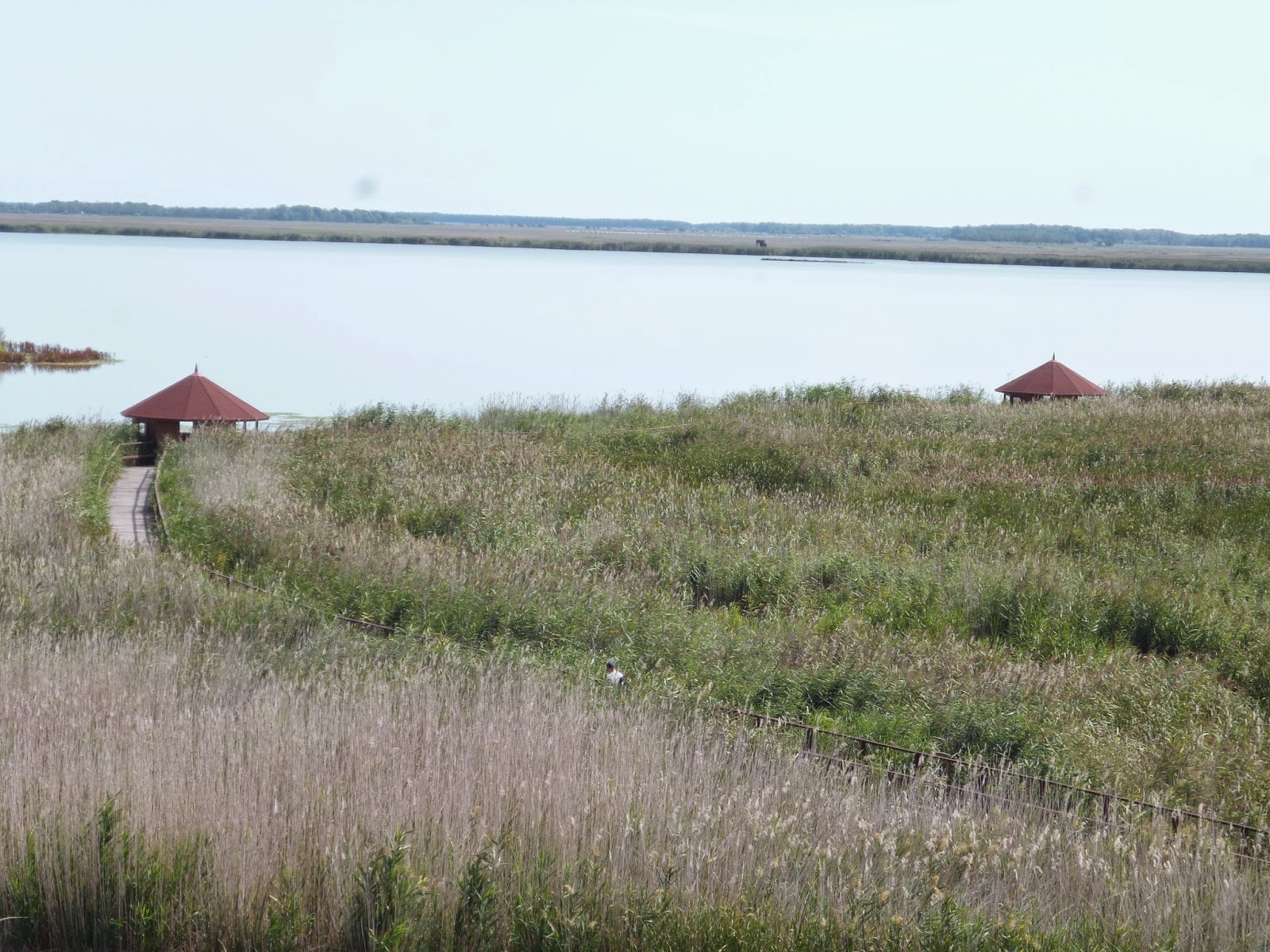One of the most well known Ramsar area in Hungary is Hortobágy. This time, I visited the Hortobágy Fish Pond district, where I also participated in ringing activity at the international ringing station. It is international because birds fly into the nets from so many countries, just joking, hahaha.
Here you go, a very nice example how an eco-region can function as a tourist attraction. This train station is new and attractive, well kept with a play ground near by. I also saw a note board, where birders can write down where and what have they seen. Information desk and all the necessary facility is available to have a relaxing day in one of the largest national parks of Hungary.
This is the ringing station, where one can volunteer and help out to take the birds out of the net. Ringers with official licence are also welcomed so people could come here from all over the world.
I had the chance to see a
Kingfisher (
Alcedo atthis) in hand. Very nice animal with bright blue coloring. The above picture shows a passerine caught with the net and then taken into a cotton bag. Usually it is better to lay them into the pockets of the net, so they can rest while the bird ringing team checks out the whole net. It is crucial to note where and when one exactly found the bird as it is impossible to analyse the data without this information. All the nets have a unique identification number and hourly check ups are regular during migration time.
The station is quite new, not fully equipped but soon it will be. Sleeping places are available at the train station, which is very near (circa 5 minutes on foot)!
I have found an interesting blog about a ringing station in Israel, if you have time check it out: http://eilatbirding.blogspot.hu/
Immense reed beds cover the area so reed dwelling species can certainly thrive here. I have seen a
Bittern (
Botaurus stellaris) while passing by with the train. It was very surprised to see us, so frozen without any move, not that it would move if we would have seen him without the pounding noise... Anyway, birds are flying all over the place, and the fields are grazed by semi-wild water buffalo. Eco-friendly that's for sure!
Not all lakes are managed for commercial purposes. Some are only there for nesting and foraging. I do not know much about the fishing activity but I know that the company works together with the national park and for example provides accommodation. There are so many opportunities to stay over for a night as the village called Hortobágy is near by and local people rent out every room they have it unused (see: http://www.hortobagy.hu/turizmus/szallasadok/).
I took this photo from the train. Apparently there are so many stops during the 20 minutes ride but the train does not stop for the moment. This website (at the moment mainly in Hungarian) explains a lot about the history of the train: http://narrowgauge.hu/view_cikk.php?id=883&rfa=164
Floating vegetation makes the area distinctive and attractive for various species.
At the last stop the train makes a long pause. One can decide to go back on foot or take the train back. There are observation points in the reed, which are very nicely constructed. Rangers of the national park accompany the passengers and they give a short introduction to the area. After that, it is possible to ask for their advise and use their equipment.
I have seen the following species:
Squacco heron (
Ardeola ralloides),
Barn swallows (
Hirundo rustica) dancing in the air, different ducks feeding on the open water.
This is how the area looks like with a bird eye. I climbed a pretty high observation tower and took a photo of the area. There are several lakes in a row, lake Kondás is the last one and this is the terminus of the narrow gauge train too.
Meeting point at the train station.
Some good food source in the village of Hortobágy, where I had my birthday lunch on the 23rd of August. Csárda means 'Inn' and typical at the Hungarian countryside.



























































